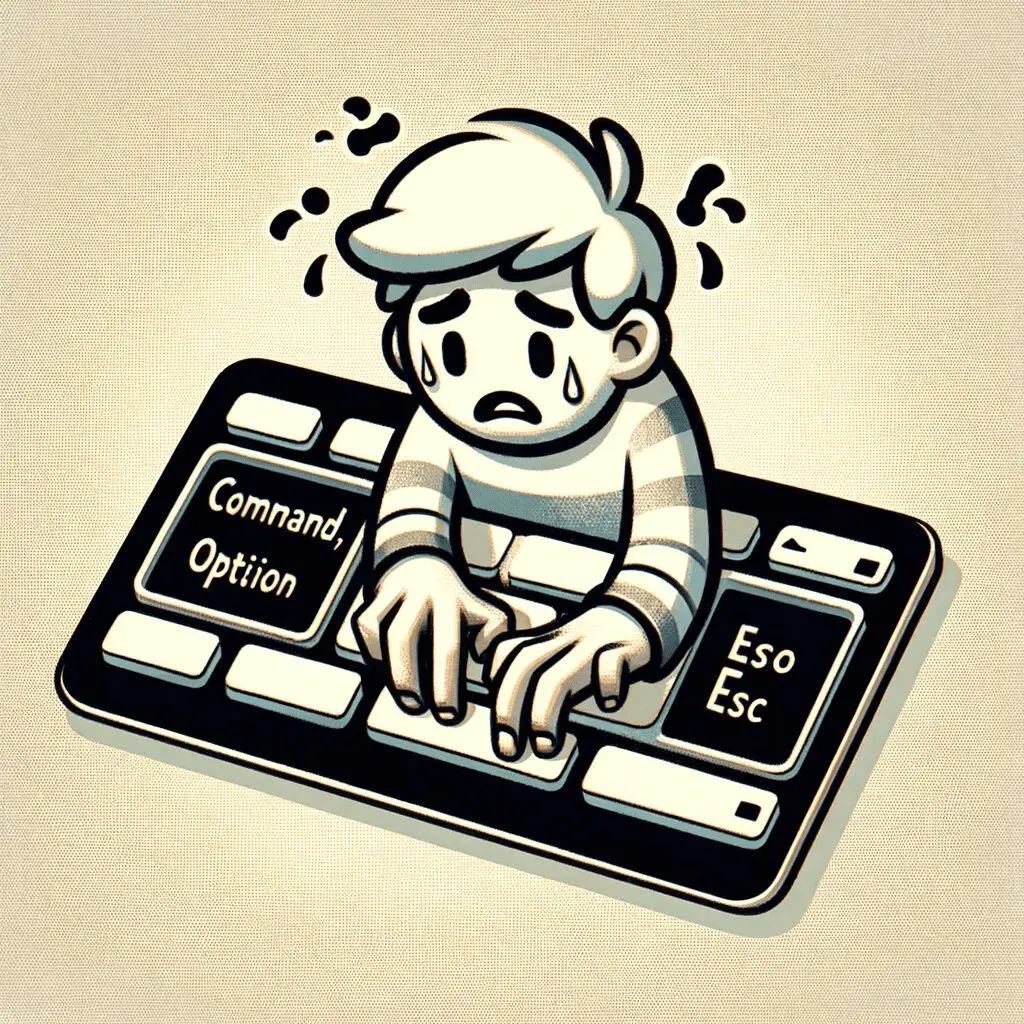Do you need to know how to force quit on Mac? Whether you’re a high school student juggling assignments, a professional managing workflows, or simply a casual user, your Mac is an essential tool. But what happens when an application freezes and just won’t close? This is where knowing how to force quit on a Mac becomes invaluable. In this guide, we’ll explore different methods to force quit applications, understand what causes these issues, and how to prevent them in the future.

Understanding How to Force Quit on Mac
Before diving into the methods, it’s important to understand what force quitting is. Essentially, force quitting is an action that you take to close an application that is not responding. It’s like turning off a malfunctioning machine; it’s not the first choice, but sometimes it’s necessary.
How to Force Quit on Mac Method 1: Using Keyboard Shortcuts
The quickest way to force quit an application is using a keyboard shortcut. Here’s how:
- Press
Command+Option+Escsimultaneously. This brings up the Force Quit Applications window. - You’ll see a list of all open applications. Select the one that’s not responding.
- Click on the ‘Force Quit’ button at the bottom of the window.
This method is straightforward and works in most situations where an application is unresponsive.
How to Force Quit on Mac Method 2: Using the Apple Menu
If the keyboard shortcut doesn’t work, or if you prefer using the menu bar, here’s another method:
- Click on the Apple logo located at the top left corner of your screen.
- Select ‘Force Quit’ from the drop-down menu. This action will also bring up the Force Quit Applications window.
- Choose the application you wish to close and click ‘Force Quit’.
This method is a bit slower but equally effective.
How to Force Quit on Mac Method 3: Using the Activity Monitor
For a more detailed approach, especially when you want to see what’s consuming your system’s resources, use the Activity Monitor:
- Open Activity Monitor by searching for it in Spotlight (press
Command+Spaceand type “Activity Monitor”). - Once open, you’ll see a list of all running processes.
- Find the unresponsive application in the list, select it, and click on the ‘X’ icon in the toolbar.
- A dialog box will appear asking if you want to quit or force quit the application. Choose ‘Force Quit’.
This method not only helps in closing unresponsive applications but also in monitoring the health of your Mac.
Understanding Why Applications Freeze

Applications on your Mac might freeze for several reasons. It could be due to insufficient memory, an outdated or buggy app, or conflicts with other software. Identifying the cause is key to preventing future occurrences. Regularly updating your applications and operating system can reduce the chances of such issues.
Preventive Measures
- Regular Updates: Keep your macOS and all applications updated. Developers often release patches and updates to fix bugs that might cause applications to freeze.
- Monitor System Performance: Use Activity Monitor to keep an eye on your system’s performance. Look out for applications that are using excessive memory or CPU.
- Avoid Multitasking with Heavy Applications: If you’re using resource-intensive applications, try to avoid running too many of them at once, especially if you have an older Mac.
- Manage Your Startup Items: Too many applications opening at startup can slow down your system. Go to System Preferences > Users & Groups > Login Items to manage these.
What to Do After Force Quitting
After you force quit an application, it’s advisable to take a few steps before reopening it:
- Wait a Few Seconds: Give your system a moment to process the closure of the application.
- Check for Updates: Ensure the application is up to date.
- Restart Your Mac: If your system was significantly slowed down, a restart might be a good idea.
When to Seek Professional Help

If you find yourself regularly needing to force quit applications, or if your Mac is consistently slow or unresponsive, it might be time to seek professional help, who will know how to force quit on Mac, but also get to the root cause. Persistent issues could be a sign of underlying hardware problems or complex software conflicts that require expert diagnosis.
How to Force Quit on Mac: Conclusion
Knowing how to force quit on a Mac is a handy skill that can save you from frustration when an application becomes unresponsive. While it’s a powerful tool, it’s also important to understand the root causes of such freezes and take steps to prevent them. Regular maintenance of your Mac, such as updates and monitoring system performance, can go a long way in ensuring a smooth, efficient experience. Remember, force quitting is a last resort, not a go-to solution. Use it wisely and take care of your Mac, and it will serve you well for years to come.

